By Mike Smith
Pressure, Cover, Balance. Foundations of defense. While tons of work is put into the various aspects of pressure, we as coaches often miss a chance to improve our team defense by only dealing with cover as the next player in line to pressure. For this reason, many players simply fly to the area where the ball is and get behind the pressuring player. Or, the covering player drops so far back they aren’t really in a position to effect the play at all. A good cover player will certainly get in position to pick up pressure on the ball BUT also be in position to command the next area of space. Understanding the next area of space is what for me makes the difference in actual covering as opposed to a simple double team.
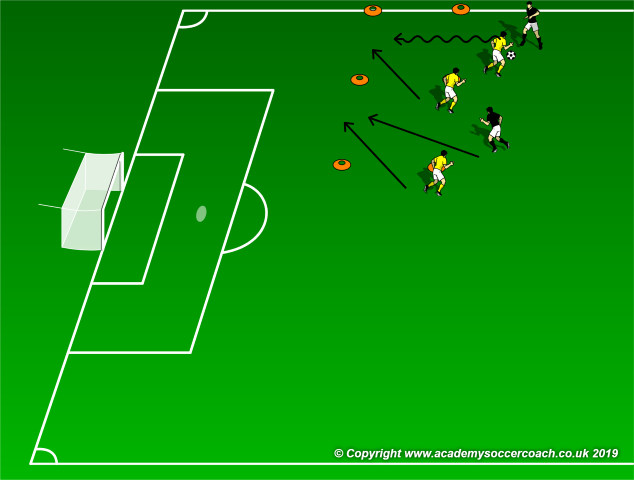
In the above diagram, the covering player is too close. IF the defender ( yellow ) pressuring the ball gets beaten the cover is out of position and will have to give up the space marked by the cones. This also forces the balancing player to drop in and cover and until the defender who got beat can recover, the space is vulnerable, as shown below.
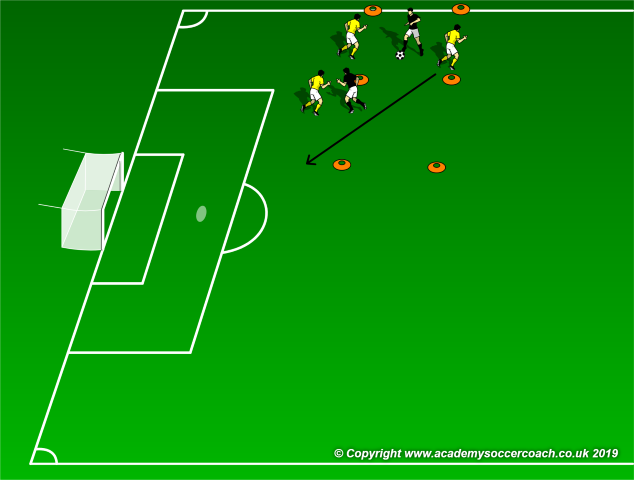
The cones represent the space the defense needs to hold, not give up. With better covering position, the defenders can hold the attack in that space ( delay ) recover shape more quickly ( deny ) and even perhaps win the ball ( destroy ) EVEN if the initial pressure is beaten – see below.
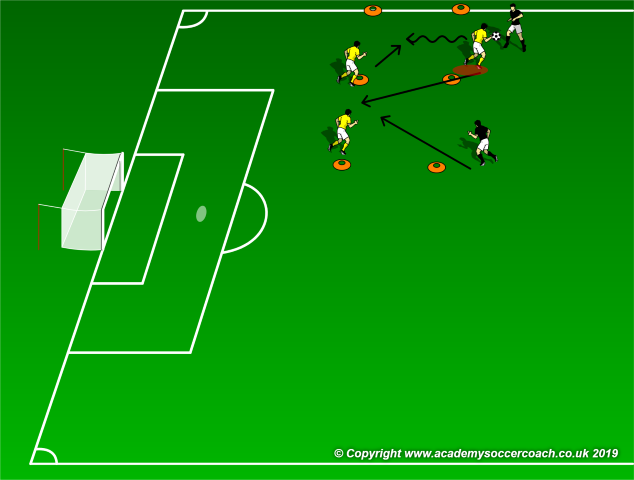
It is a subtle difference but an important one. The covering defender should STEP UP to pressure the attacker and THEN move with the attacker. This allows the balance to hold – do not worry about giving up an off sides advantage here, the balancing defender can hold the line a bit deeper and the pressuring defender can recover in the line of the pass/ or run of the second attacker. The idea is for the covering player to read the play in front of them as it is happening and step up to arrive in the same place as the attacker as the attack beats the initial pressure. With immediate recovery from the beaten defender the SPACE is now defended along with the ball.
Set Up
As shown below, set up a 20yd by 20yd cone grid with 3 defenders working inside against 3 attackers coming in from the outside. Play starts with the pressuring defender sending the ball out to the attacker, who then attempts to dribble into the grid. To start, the attacker who receives the ball must attempt to beat their defender on the side they received the ball from. Attackers score by passing the ball through the stick gate from the second level of the grid. The focus is on the covering player being in position to deny the attackers entry into the second part of the grid. Once inside the grid, the attackers may combine to attempt to penetrate the second level of the grid and make a scoring pass. Teams of players rotate in and out in groups of 3 with the attackers going to defend, a new team stepping up to attack and the defenders going to the back of the rotation.
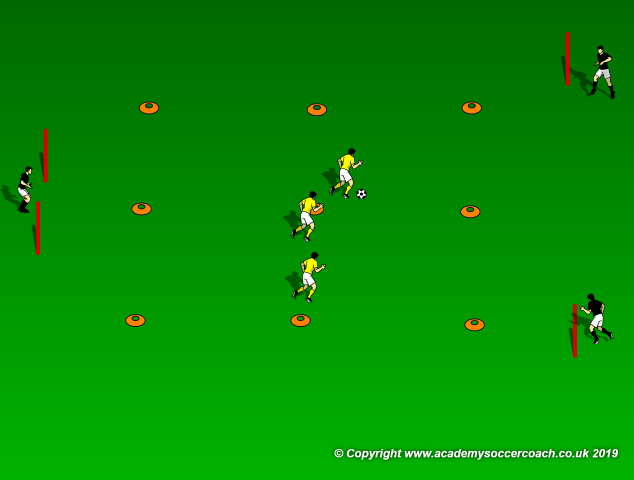
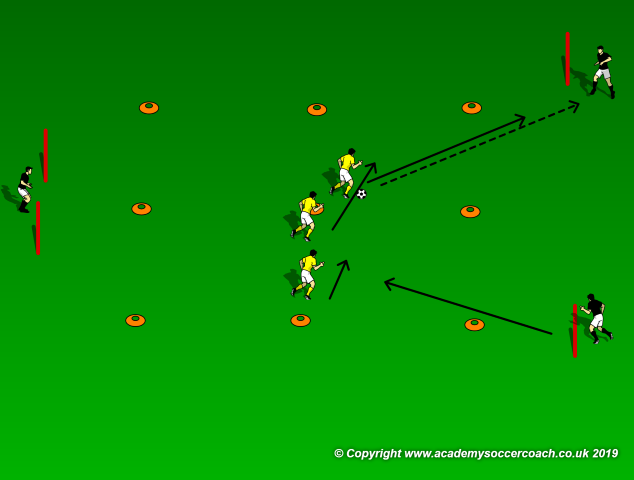
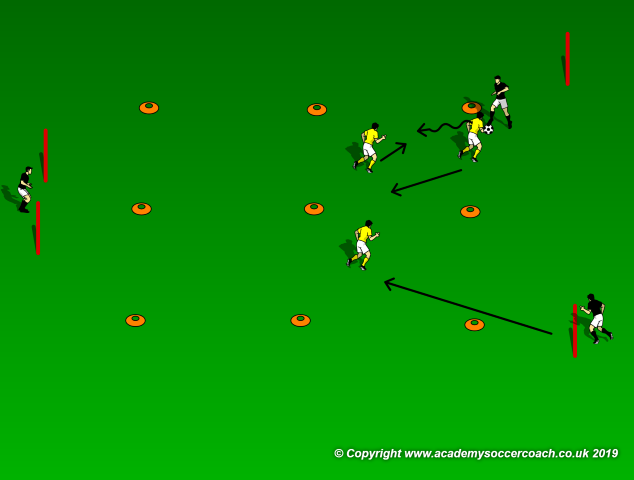
Coaching Points
The coach should make sure the focus is on covering angles. Do not let the attacker beat two defenders with on move or one dribble. As the play progresses the coach can allow the attackers to combine quickly and switch the point of entry to off balance the defenders. The defenders can also be awarded points for every 10 seconds they keep the attackers in the first level of the grid. As a final progression, add a 4th defender and allow 3 attackers to combine to penetrate the penalty box with the defensive goal being to keep the attack outside the box.
By Mike Smith
Currently the Head Coach for University Heights Academy Boys Soccer in Hopkinsville, KY , Mike is in his 14th year as a high school head coach with 23 years coaching experience overall and 34 year as a student and fan of the game. He holds a USSF D License.


